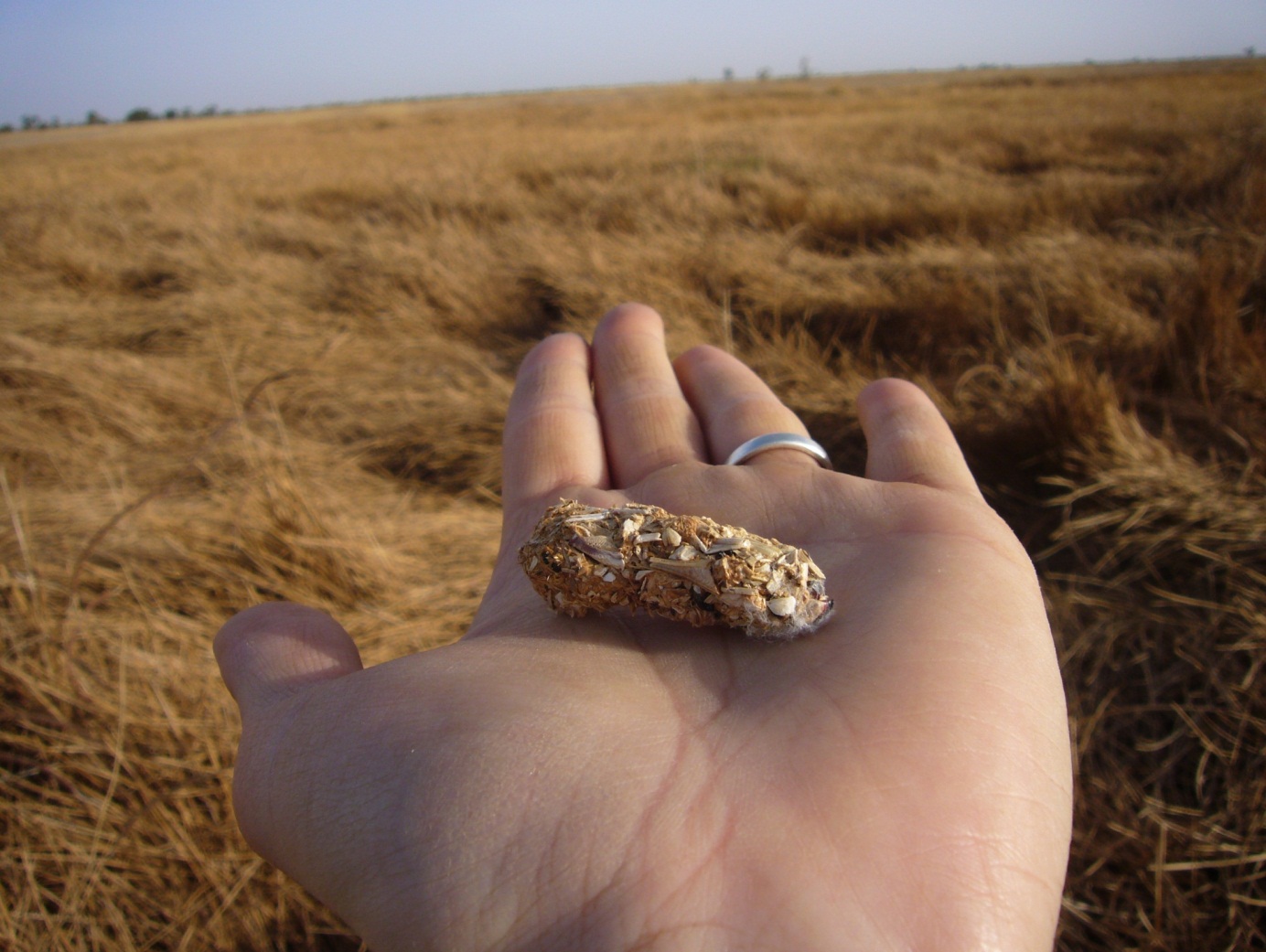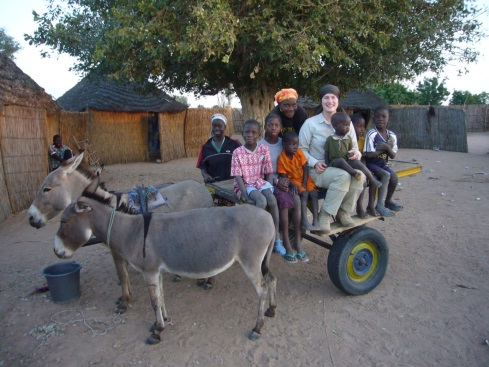Meeting Montagu’s Harrier Edwin in Senegal
Wednesday, March 20th, 2013
Species: Montagu's Harrier
Project: Conservation of Montagu’s Harrier
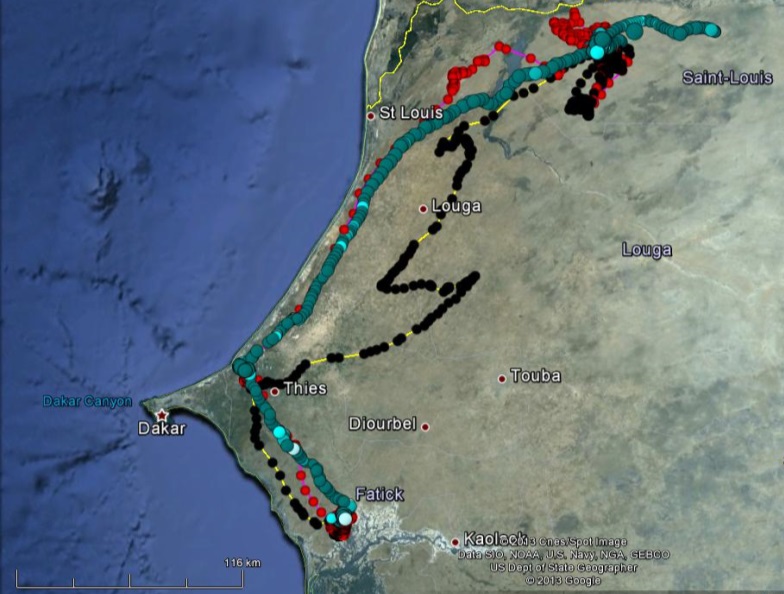
This map of GPS data collected over three winters shows how site-faithful this male Montagu’s Harrier is. Edwin always uses three distinct wintering areas. In the third area, close to Fatick, we were able to observe him and download this data in February 2013. Symbology: red 2009-2010, black 2011-2012, blue 2012-2013. Click map to enlarge.
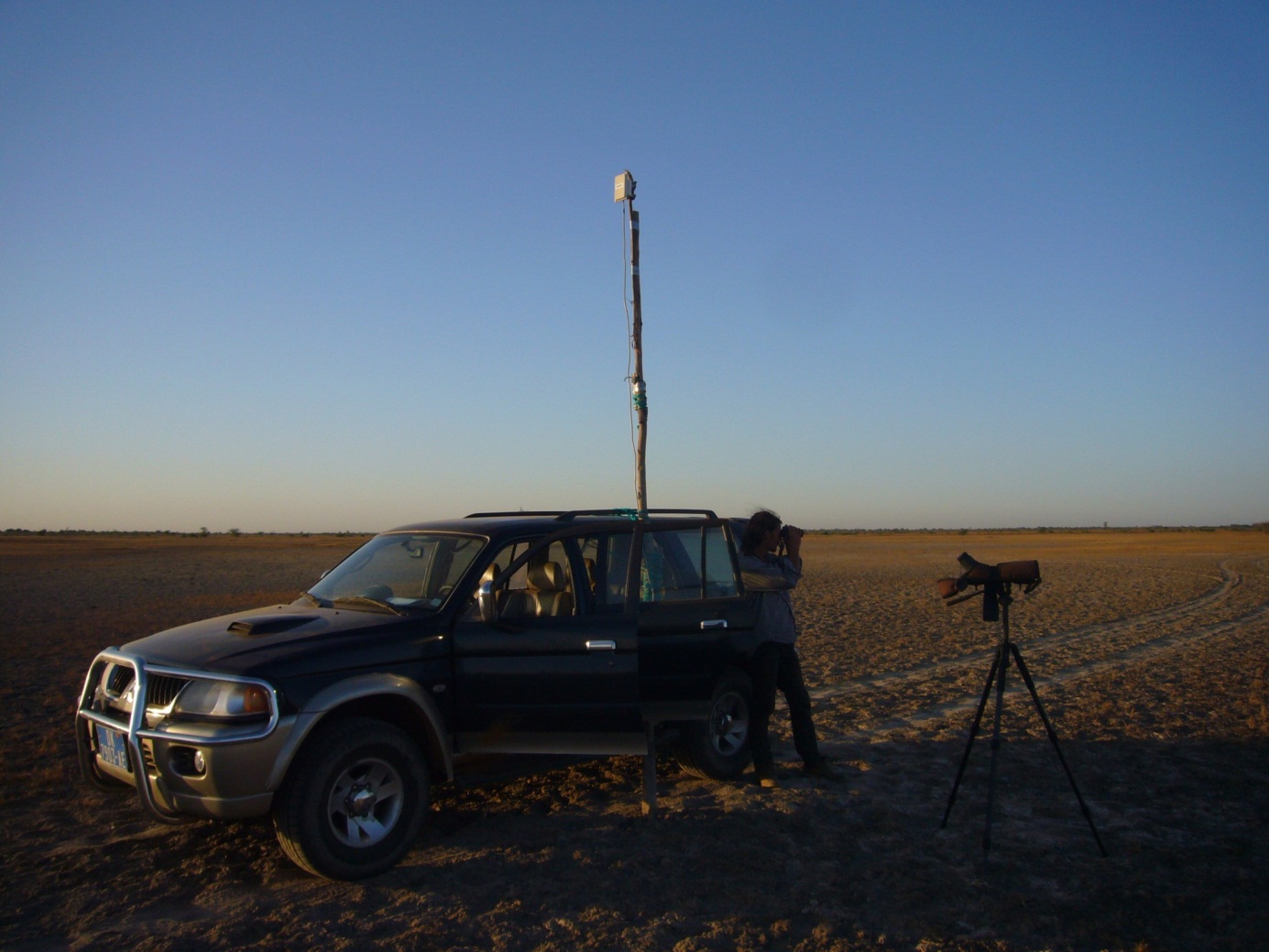
Trying to find Edwin at a roost using a mobile antenna and observations of arriving harriers. Photo: Almut Schlaich
Montagu’s Harriers roost communally. Therefore, our first step was to find roosts and set up the antenna during the evening. While observing the second roost we couldn’t believe our eyes. Among a group of about 70 other Montagu’s and 5 Marsh Harriers, suddenly Edwin passed our observation point within about 30 meters distance! We could almost see the mounted GPS tracker without binoculars. At that point, no contact was established with the tracker, despite the fact that the mobile base station was up and running. The same happened the following evening, when we saw Edwin again but no contact with the tracker was made, and we started to fear that the GPS tracker was not working anymore. On the second day we managed to find Edwin during the day, while he was foraging. By following him over open dried-out lakes and through bushes we finally made contact with the tracker. The download started and while Edwin was catching some grasshoppers, valuable data was streaming in. Just before midday, when it heats up in Senegal, Edwin moved. We followed him and saw that he landed in a tree. At about 100 meters distance from the tree we stopped and waited about 2.5 hours in a very hot car (without food!) until all data recorded from June 2012 until that day was downloaded. How glad we were! Without disturbing the bird we left Edwin and had a well-earned lunch in the shade.
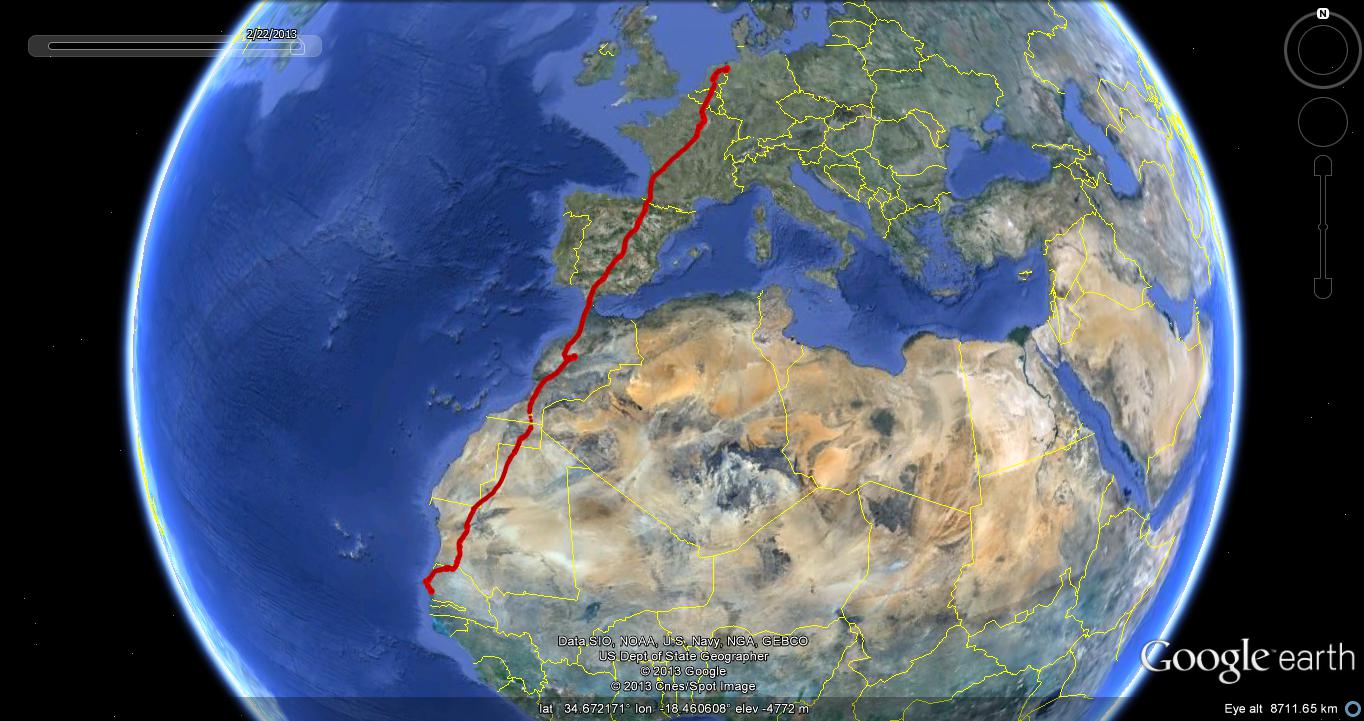
This map displays the GPS tracking data of Edwin’s autumn migration from the Netherlands to western Africa, downloaded in Senegal during field activities conducted in winter 2013.
During the following week we managed to find him three more times and download the data that was collected in the meantime. When we left Edwin we knew much more about him, the same bird we normally see dancing above the fields in Eastern Groningen. In Senegal, he has a quiet life without a female or chicks to care for. Eating some grasshoppers in the morning and afternoon is nearly all he does. During the hot hours he sits in the shade in a tree or under a bush. And in the evening he returns to his roost to meet the other birds. Not very exciting but very safe for sure! That gives us hope that we will see Edwin back in the Netherlands in a few weeks for a new breeding season.
For more on this project being conducted by the Dutch Montagu’s Harriers foundation and the University of Amsterdam, see Conservation of Montagu’s Harrier.
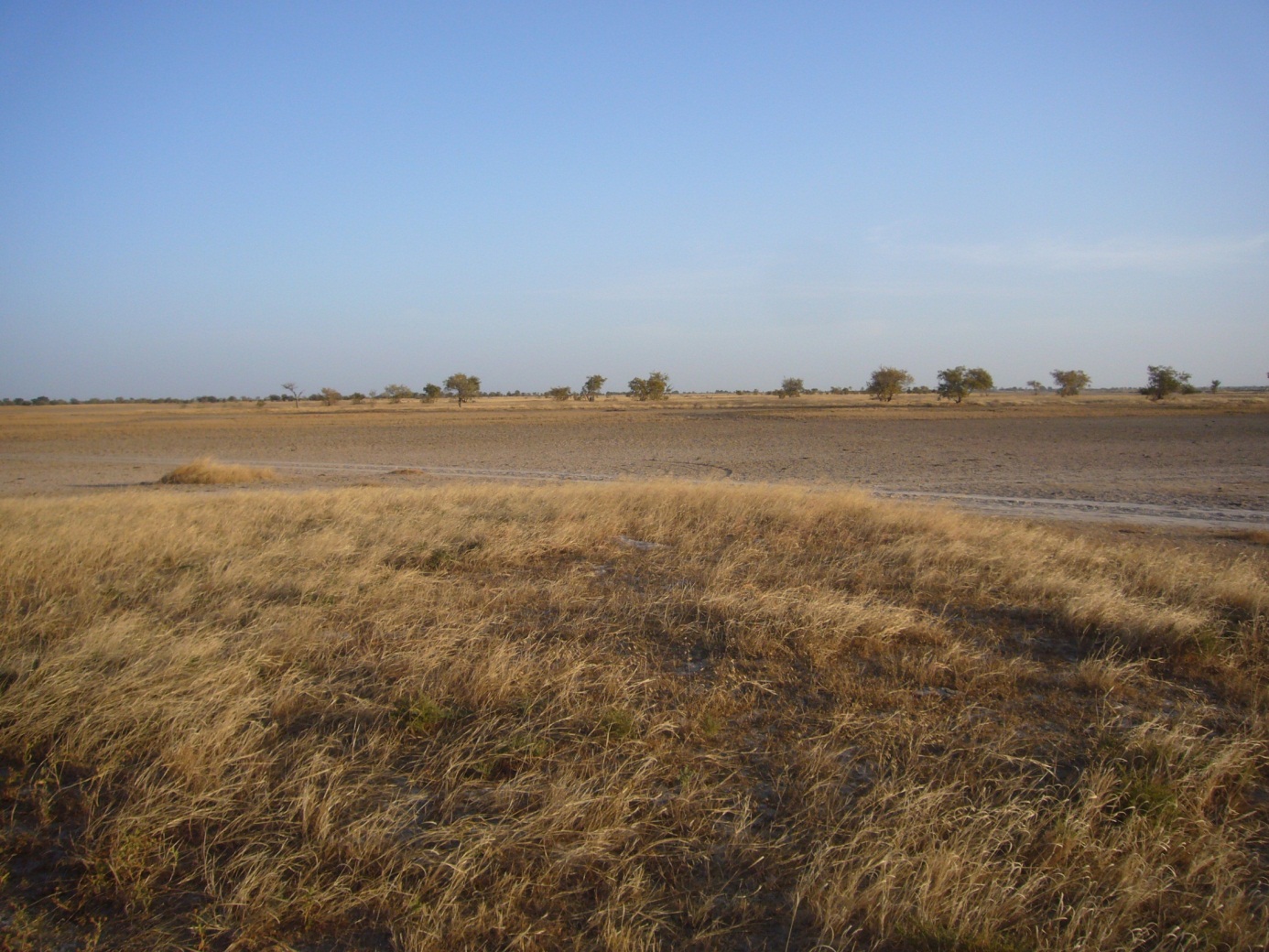
Typical landscape of Edwin’s wintering area. He normally arrives end of November and stays until his departure for spring migration, end of March. Photo: Almut Schlaich
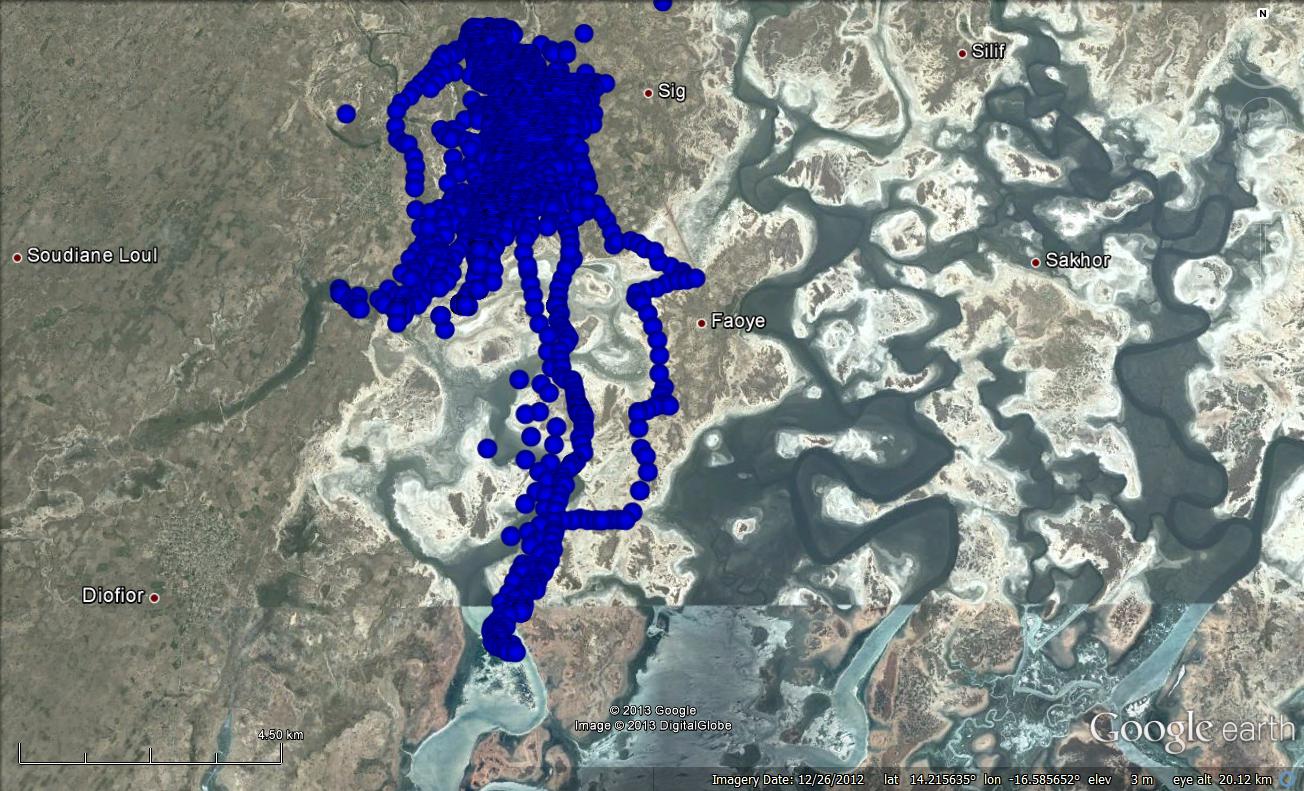
GPS data points collected in Edwin’s wintering area close to Fatick, Senegal in 2013. The bird spends most of his time in a very small area where he finds everything he needs.
Latest Highlights

Overwintering and foraging areas used by a 24-year old Eurasian spoonbill
Wednesday, April 18th, 2018

Lesser Black-backed Gulls from Schiermonnikoog enjoy their winter holiday
Tuesday, April 3rd, 2018

Oystercatchers returning from inland breeding grounds
Sunday, July 23rd, 2017

GPS tracker with SMS messaging
Monday, November 2nd, 2015

Ronny found back, three years after deployment of the UvA-BiTS GPS-tracker
Wednesday, July 8th, 2015

Lesser Black-backed Gulls feed on potato crisps in Moeskroen
Wednesday, November 13th, 2013

‘Vogel het uit!’ has won the 2013 Academic Year Prize
Tuesday, November 5th, 2013

Back in Europe: UvA-BiTS Honey Buzzard photographed at the Strait of Gibraltar
Wednesday, May 15th, 2013

UvA-BiTS database passes 10 million record mark
Wednesday, May 8th, 2013

Gulls pouring into the Kelderhuispolder colony
Wednesday, April 17th, 2013

To the Karoo and back: Mate replacement & GPS tracking study of an ousted eagle
Monday, March 25th, 2013

Meeting Montagu’s Harrier Edwin in Senegal
Wednesday, March 20th, 2013

Oystercatchers: Learning how and where to survive
Wednesday, August 29th, 2012

New GPS mini-tracker facilitates investigation into movement of smaller animals
Wednesday, July 4th, 2012

Over 5 million GPS fixes in the UvA-BiTS database
Thursday, June 21st, 2012

Tagged Lesser Black-backed Gulls return to Orford Ness
Wednesday, April 18th, 2012

Gulls spotted in their over-wintering areas
Wednesday, December 21st, 2011

The UK a top vacation destination in 2011
Wednesday, July 13th, 2011

A long way from home
Sunday, June 26th, 2011

Visiting Amsterdam for a day
Saturday, May 14th, 2011

Female deserts brood, male raises chicks
Friday, May 13th, 2011

Wintering range in Sierra Leone
Friday, May 13th, 2011

Camera watches foraging Oystercatchers day and night
Thursday, May 12th, 2011

The return of a bird presumed dead
Wednesday, May 11th, 2011

Texel gulls back from wintering areas
Sunday, May 1st, 2011

First Lesser Black-backed Gull returns to the breeding colony
Monday, April 13th, 2009


